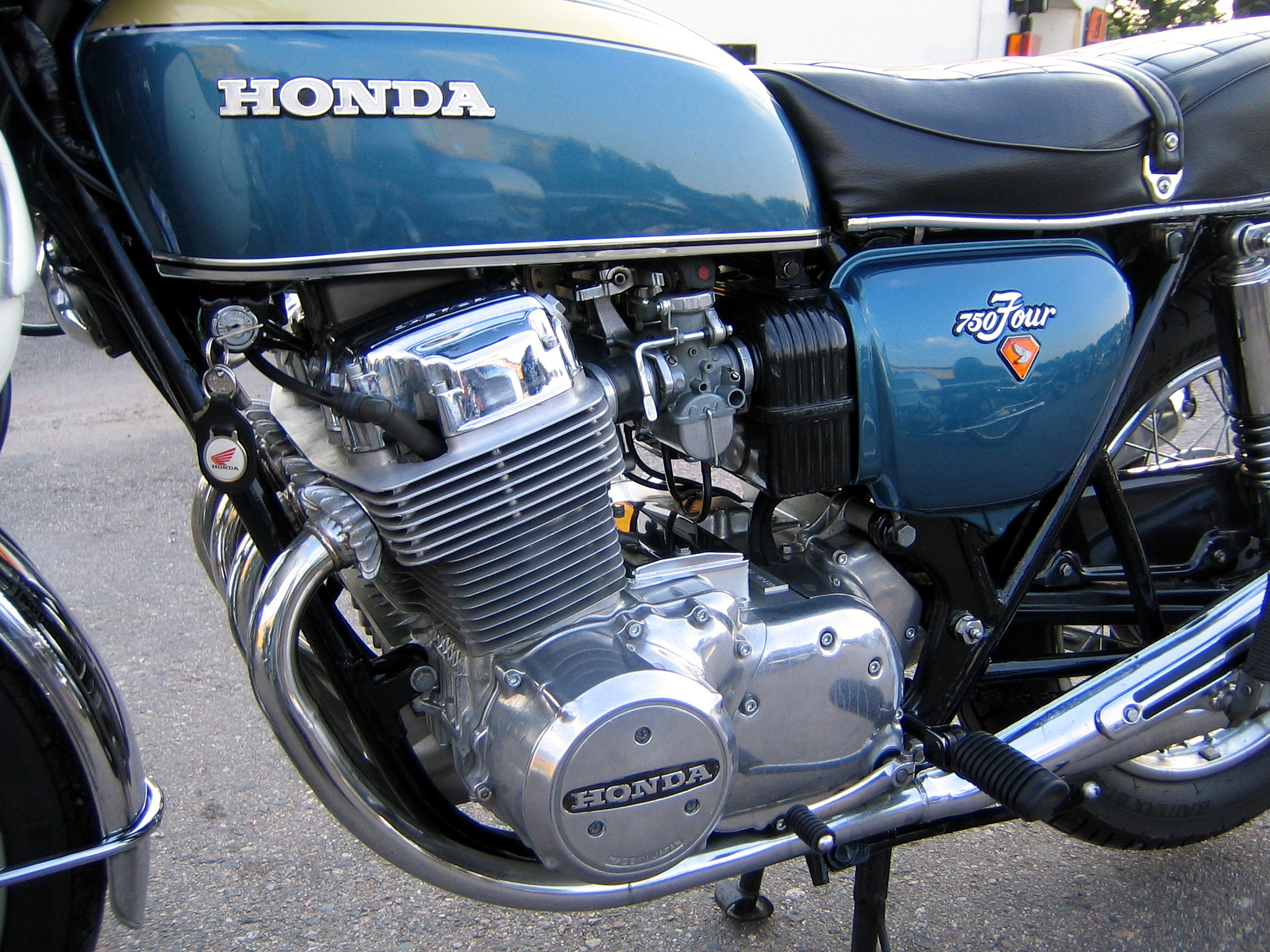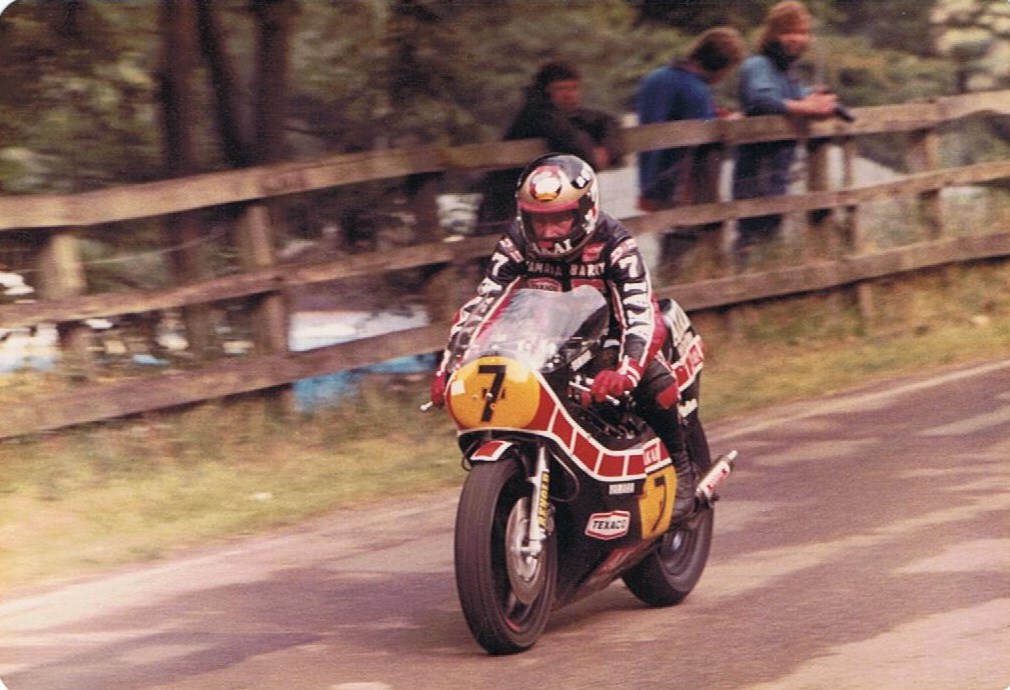Eighty years ago Britain ruled the motorcycle world. We made the most bikes and had the fastest racers. So let’s travel back to the 1930s to see what has happened over the last eight decades.
There’s been a big change in why people ride. Before the advent of the cheap, second hand car a motorcycle (with or without sidecar) was the means of escape for many. However, although it was once essential, primary transport, motorcycling is now very much a leisure activity.
Rockers and choppers
By the late Fifties, young working class lads known as Rockers aped their TT and short circuit road race stars by souping up their machines with clip on handlebars, race-styled fuel tanks and seats and noisy exhausts to produce cafe racers. Eventually this home-grown scene was ousted in the early Seventies thanks to the 1969 seminal biker flick, Easy Rider. Choppers were in and Stateside styling – for motorcycles and riders – was suddenly fashionable. The biker was born, and the loose-knit, cafe-based Rocker society began to be displaced by US-style MCs.
The Born Again Biker
Changing demographics and increased levels of disposable income as their children grew up and left home meant that by the Nineties a new phenomenon began to appear: the Born Again Biker (BAB), and the Rich Urban Biker (RUB). Britain’s bikers have never really lost their taste for speed, and by now race replica machines had became de rigueur again with the likes of the Fireblade, R1 and Ducati 916.
The growth of naked
Right now the two most popular styles are sit-up-and-beg naked machines and adventure sports big trail bikes. As bikers get older, the extreme riding positions of supersports machines are becoming less attractive… the Sons of Arthritis (Ibuprofen Chapter) prefer a roomier ride. Motorcycling has become a middle-aged man’s hobby, and for many their car takes preference when the weather changes.
Shifts in manufacturing
At the same time there’s been a major shift in manufacturing. Back between the wars, you rode a British bike from one of a multitude of factories. There were over 80 different makes available in the 1930s, from household names like Triumph, BSA and Norton to less well known minor marques.
The BSA Group bought Triumph Motorcycles in 1951 to become the largest producer of motorcycles in the world. British manufacturers Triumph, BSA, and Norton retained a dominant position in some markets until the rise of the Japanese manufacturers, led by Honda, in the late 1960s and early 1970s.
Shake up from Honda
Suzuki, Kawasaki and Yamaha each started producing motorcycles in the 1950s. But the big shake up came from Honda – officially founded in Japan in 1948 – with the introduction of their CB750 in 1969. At the same time as Honda were selling this four-cylinder, single over head camshaft, disc-braked bike with electric starter and indicators, Norton were advertising their 650 push rod twin as being “now with pillion footrests!”
Honda’s CB750 was inexpensive given its relative complexity and design superiority; unsurprisingly it was immediately successful. Practically overnight it established the UJM (Universal Japanese Motorcycle) layout of an across-the-frame-four engine.

Kawasaki KZ900
Shortly after the launch of Honda’s bike, Kawasaki went one further with the introduction of the KZ900. British rule of the motorbike market was coming to an abrupt end.
However, fast forward to the new Millennium and changing tastes and aspirations meant that British motorcyclists were now keen to try alternatives to Japanese machines. As a result, European brands like BMW, Ducati and MV have all seen resurgences in their fortunes along with Harley-Davidson and a resurrected Triumph.
The nature of riding
And it’s not just where your bike was built that has changed: the very nature of what you ride has, too. Not just in terms of technological advances, but in what it is designed to do. Many years ago bikes were just bikes, and you’d use the same machine for commuting, touring, scratching round country roads, maybe a bit of green laning and possibly – with a sidecar fitted – taking the family on holiday.
Now you might have more than one machine in your dream garage – a dedicated supersports bike, a full dress tourer, a hogged out custom cruiser and a specialist off roader. The days of the all rounder are gone.
Brits dominate
As with motorcycle manufacturing, Brits dominated racing 80 years ago. The Isle of Man TT became the foremost motor-cycle racing event in the 1930s, with more and more motorcycle manufacturers show-casing their products there.
Grand Prix motorcycle racing – aka MotoGP – took off in 1949, and from the outset till 1976 the TT was the British round of the championship. However the TT is an unforgiving circuit and was axed from the world championship from 1976 due to increasing safety concerns. The 1977 British Grand Prix was held at Silverstone.
Duke, Surtees, Hailwood, Read and Sheene
British riders Geoff Duke, John Surtees, Mike Hailwood, Phil Read and Barry Sheene were pretty much all powerful for several decades from the launch of GP racing.
Only Italian Giacomo Agostini was capable of wresting the crown away from Britain on a regular basis till the late ’70s, when the USA with Kenny Roberts, Freddie Spencer, Eddie Lawson, Wayne Rainey and Kevin Schwantz, and Australia with Wayne Gardner and Mick Doohan pretty much ruled the roost.
Finally, Europe has become dominant from 2001 on, first with Italian Valentino Rossi, then with Spaniard Jorge Lorenzo.

Of course one of the biggest factors that moulds any society is government and the legislation it introduces. 1930 saw the UK suffer its highest ever road user casualty rate of 1,582,000. So within a few years various initiatives were introduced to reduce this.
Speed limits introduced
In 1934 speed limits were introduced, and compulsory testing was brought in for all drivers and riders. In 1947 the Motor Vehicles (Driving Licences) Regulations placed motorcyclists in their own licence group, but testing remained virtually unchanged until the 1960s.
In 1961 learner riders were limited to 250cc bikes. In 1972 the minimum age for riding a motorcycle was increased from 16 to 17 years (the minimum age for moped riders remained at 16 years). In 1973 crash helmets became compulsory, leading to the formation of the Motorcycle Action Group (MAG) in protest.
Slump in registrations
In 1977, mopeds were restricted to 30 mph. Then in 1981 the government produced a three point package of changes whereby the maximum size of learner machines was reduced to 125cc, provisional motorcycling licence entitlement was limited to two years and a two-part test was introduced. By 1987 annual new registrations had fallen below 100,000 – the lowest level since 1949.
Motorcycle sales all-time low
And still the legislative machine rolled on. In 1990 the Part 1 test was scrapped and replaced by Compulsory Basic Training (CBT). The EC Type Approval directive was proposed, becoming EU law two years later. The 100th Gatso Camera was installed in the UK in 1994. Then in 2009 we saw the introduction of the controversial “new” two part test at Multi Purpose Test Centres (MPTCs).
Within a year both the number of new riders passing their test, and the number of motorcycle sales, dropped to an all time low. 2013 saw the introduction of the 3rd Driving Licence Directive with its three new categories of motorcycle for testing, A1, A2 and A. All are age limited and subject to further training or test to move up to the next level.
25th anniversary of CBT
Which brings us up to 2015 and the 25th anniversary of Compulsory Basic Training (CBT)… But for those who progress through to a full licence, you’ve only got to look at today’s incredible bikes to realise it’s still a great time to be a biker!